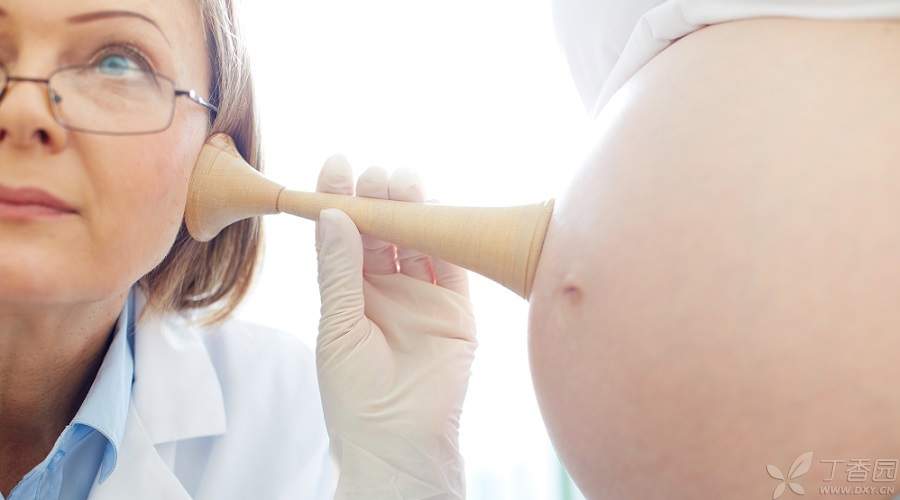
After the first visit to build a big card, you will get a lot of laboratory tests and examination reports.
These tests and inspection reports will contain many high and low changes and arrows (hints of abnormal changes), as well as professional terms that are difficult to read and look strange.
This will bring a lot of troubles to expectant mothers and mothers-in-law.
There are also many mobile medical apps that help people interpret laboratory tests and examination reports. Unfortunately, there are a lot of help and few reliable ones.
In order to reassure everyone, I will list some major common problems for everyone to interpret. This interpretation is for reference only. Your specific situation and handling still need you to discuss with your prenatal doctor.
Is it a [abnormality] of the blood system or a normal phenomenon after pregnancy?
After pregnancy, women’s blood system indexes will appear some different changes from those before pregnancy. These changes are normal changes, don’t worry. At present, the blood index system used in obstetrics clinic is the standard for normal non-pregnant women. Therefore, it is not surprising that there are some high and low changes.
1. The number of red blood cells is low, is there anemia?
In blood routine, the most common abnormal change is the decrease of hemoglobin, and anemia-related indexes such as hematocrit and mean erythrocyte volume also decrease. The incidence rate of anemia in pregnant women can be as high as 20% ~ 30%, so it is very important to find anemia and supplement iron in time.
However, after a woman becomes pregnant, especially in the middle and late stages, there will be changes in laboratory examination indexes brought about by the increase of blood volume and hemodilution, somewhat like [anemia]. As long as these changes are within the normal range, there is no need to worry about them.
In some hospitals, serum ferritin is also detected in addition to blood routine examination to see hemoglobin level.
The decrease of serum ferritin indicates the decrease of iron storage. Even if the diagnosis of clinical anemia has not been reached, iron supplement can be considered. The guidelines for anemia during pregnancy of the perinatal medicine branch of the Chinese Medical Association recommend that qualified hospitals can check the serum ferritin of pregnant women. If the serum ferritin is less than 20 g, it is iron deficiency.
2. The number of white blood cells is high. Are you infected?
In the report of blood routine, the total number of white blood cells often increases. Some people are worried about whether there will be infection.
In fact, most pregnant women will have leukocyte elevation, generally 5 ~ 12 x 10 9/L, sometimes up to 15 x 10 9/L.
The white blood cells in labor and puerperium will also increase significantly, generally 14 ~ 16 x 10 9/L, sometimes as high as 25 x 10 9/L.
These changes are mainly neutrophilic granulocytosis, lymphocyte proliferation is not obvious, monocyte and acidic granulocyte are almost unchanged. Therefore, as long as there is no history of infection and corresponding changes in symptoms and signs, there is no need to worry at all, this is normal change.
3. Low platelets, is it normal?
In blood routine, another indicator that doctors take a fancy to most is platelets. If the number of platelets is less than 100 x 10 9/L, attention must be paid to it and further examination and treatment must be carried out. If necessary, a hematologist should also be consulted.
Does it matter if the urine routine [+] is used?
After pregnancy, urine routine examination is required for every prenatal examination.
1. Urine white blood cells are high, is urinary tract infection?
The [+] sign of white blood cells, red blood cells and urine protein often appears in the urine routine report. There is no need to worry about this kind of situation, most of which is caused by irregular urine and pollution when sending the test.
When this happens, It is suggested to clean vulva before going out to the hospital next time. When leaving urine in the hospital, do not take the front section of urine, and leave the middle section of urine (clean the middle section of urine). If urinary tract infection occurs, besides white blood cells, red blood cells and urinary protein in urine, there will also be clinical symptoms such as urgency of urination, frequency of urination and pain of urination, and urine bacterial culture will be positive.
2. Urine protein [+], kidney disease?
If urine protein [+] still appears in continuous clean mid-course urine examination, attention should be paid to it and the possibility of kidney disease or preeclampsia should be ruled out.
3. Urine sugar [+], diabetes?
As for the urine sugar [+] sign that often appears in urine routine, there is no need to worry, because the [renal sugar threshold] drops after pregnancy, and even if the blood sugar level is normal, the urine sugar [+] sign will appear in urine.
Whether it is gestational diabetes or not depends on the diabetes screening results of 24 ~ 28 weeks of pregnancy.

Are heart, kidney and liver functions normal?
1. Is cholesterol and triglyceride high and hyperlipidemia?
After most pregnant women become pregnant, the levels of cholesterol and triglyceride will obviously increase.
This is a normal physiological change, mainly because the current clinical standard is the standard for normal non-pregnant women. If it is measured according to the standard for pregnant women, it will not be marked as abnormally elevated.
2. [Transaminase] is on the high side, is liver function abnormal?
There are many indexes in the results of liver function, and clinically, the level of glutamic pyruvic transaminase is mainly seen.
The most common abnormal change in the prenatal examination report is [elevated glutamic pyruvic transaminase].
If it is slightly elevated and does not exceed 2 times of the normal upper limit value, there is no need to worry. For this [liver damage during pregnancy], follow-up is generally sufficient without intervention. If it exceeds the normal upper limit value by more than 2 times, it is recommended to go to the liver department for further examination and treatment.
3. [Creatinine] Abnormal, Renal Function Abnormal?
There are many indexes in renal function results, mainly creatinine clinically.
Another common change in the examination report of liver and kidney function is the decrease of creatinine level, which need not be worried.
Impairment of renal function will lead to an increase in creatinine level. Decrease in creatinine level is a normal physiological change after pregnancy, not kidney damage.
4. EKG (Electrocardiogram) Abnormal, Is It Heart Disease?
Even pregnant women who are healthy before pregnancy will have [ST segment changes] and indications of [cardiac ischemia] and other changes when doing electrocardiogram after pregnancy.
As long as you have no heart disease before pregnancy and your heart function is normal during pregnancy, you don’t have to worry. If you have symptoms of [heart discomfort], it is recommended to have a 24-hour electrocardiogram examination to exclude abnormalities.
Responsibility: Haitang
Author: Duan Tao
